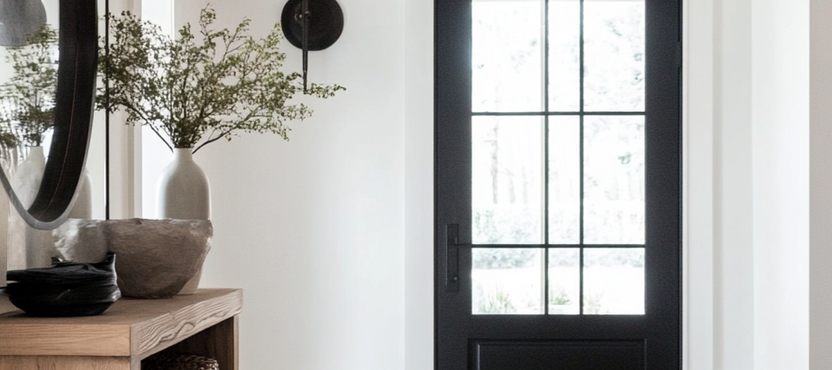Transforming Your Kitchen with Style: A Complete Guide to Kitchen Window Treatments
- Beril Yilmaz

- Aug 18
- 7 min read
The kitchen is often described as the heart of the home, and for good reason. It is where families gather to cook meals, share conversations, and create lasting memories. Yet when it comes to interior design, kitchen window treatments are frequently overlooked.
Most homeowners prioritize countertops, cabinets, and appliances, while forgetting that the right blinds or curtains can dramatically change the mood of a space. Well-chosen window coverings enhance both the functionality and beauty of a kitchen, creating a balanced and harmonious environment.
I’ve learned from my own experience that the smallest details can sometimes make the biggest difference. When I upgraded the kitchen blinds, the entire room felt brighter, more modern, and more inviting.
The right window treatment not only improved light control but also gave the room a polished look that tied everything together. This guide explores why window treatments matter, which blinds work best, how to coordinate them with your décor, and what practical factors you should consider when making your choice.
Why Kitchen Window Treatments Matter

Most people underestimate how important kitchen windows are in the overall design of a home. Beyond letting in natural light, they frame views of the outdoors and set the tone for the entire space.
Adding the right window treatment makes these features stand out, turning an ordinary kitchen into one that feels thoughtfully styled and complete.
Enhancing the Look of the Space
Window coverings bring warmth and softness to the kitchen, a space that is otherwise dominated by hard surfaces like stone countertops, tiled backsplashes, and stainless steel appliances.
By choosing the right blinds, you can add visual interest, texture, and even a pop of color. For example, patterned blinds can break the monotony of plain cabinetry, while simple neutral shades can help balance out busy countertops or bold wall colors.
The Role of Texture and Fabric
Texture plays a subtle but powerful role in interior design. A natural woven blind adds a sense of organic charm, while sleek metallic finishes can instantly modernize a space.
Even soft fabric blinds, such as cotton or linen, make a kitchen feel more homely and inviting. These choices don’t just change the way the space looks, but also how it feels to spend time in it.
Creating Balance
A kitchen with strong design elements—such as marble counters, bold cabinetry, or statement lighting—needs balance. Blinds are the perfect tool to achieve this. A patterned blind can add character to a neutral kitchen, while plain blinds in calm colors can prevent a busier design from feeling overwhelming. The goal is to create harmony, ensuring every element works together rather than competing for attention.
Practical Benefits Beyond Aesthetics
While design is important, kitchen window treatments also serve a highly functional purpose. The kitchen is a high-traffic area exposed to sunlight, steam, and food splatters, so practical considerations should always guide your choice.
Light Control and Privacy
Natural light is essential for cooking, but too much glare can make the kitchen uncomfortable. Adjustable blinds allow you to filter sunlight, reducing heat and glare without sacrificing brightness. They also offer privacy, which is especially important if your kitchen faces a street or neighbor’s property.
Durability and Easy Maintenance
Unlike curtains in a living room, blinds in a kitchen must withstand constant exposure to heat and humidity. Choosing durable, wipe-clean materials will save you the hassle of frequent replacements. Vinyl, faux wood, or coated fabrics are excellent options because they resist moisture and are easy to maintain. A quick wipe with a damp cloth keeps them looking as good as new.
Choosing the Perfect Kitchen Blinds

Blinds are one of the most versatile and functional options for kitchens. They combine style with practicality and are available in a wide variety of materials, patterns, and finishes. In my experience, the right blind doesn’t just improve how a kitchen looks—it also makes it easier to live in.
Styles That Work Best in Kitchens
Not every blind style is suitable for the demands of a kitchen. Some materials absorb moisture and odors, while others are difficult to clean.
Roller Blinds
Roller blinds are a simple yet stylish solution for smaller windows or spaces above the sink. They roll up neatly, making them perfect for kitchens where you don’t want extra bulk. Available in a wide range of colors and patterns, roller blinds are both practical and decorative. With moisture-resistant finishes, they are easy to wipe down, making them a low-maintenance option.
Venetian Blinds
Venetian blinds are a classic choice for kitchens. The horizontal slats give you full control over light and privacy—you can tilt them to let in as much or as little sunlight as you like. Available in wood, aluminum, or faux wood finishes, they suit both modern and traditional kitchens. Their durability and wipe-clean nature make them especially popular in busy households.
Roman Blinds
Roman blinds are perfect if you want to add softness and elegance. While not as resistant to moisture as roller or Venetian blinds, washable fabric options make them suitable for less exposed areas of the kitchen. They add a touch of sophistication, transforming your kitchen from purely functional to beautifully styled.
Adding Personality with Colors and Patterns
Blinds don’t have to fade into the background.
Bold Patterns
If your kitchen has plain cabinetry and neutral walls, patterned blinds can bring the room to life. Geometric, floral, or abstract designs add personality and turn your windows into focal points.
Neutral Shades
On the other hand, if your kitchen already has strong design features—such as brightly colored cabinets or striking backsplashes—neutral blinds in shades of white, beige, or grey provide balance. They ensure that your décor looks cohesive rather than overwhelming.
For a wide selection of styles, modern kitchen blinds combine both practicality and design flair, helping you achieve the perfect balance in your space.
Coordinating Blinds with Kitchen Décor

The best window treatments complement your kitchen style instead of competing with it. Whether your kitchen leans modern, rustic, or contemporary, there’s a perfect blind to match.
Modern Minimalist Kitchens
Minimalist kitchens are all about clean lines, sleek finishes, and uncluttered surfaces. Blinds in neutral tones—such as grey, black, or white—work perfectly here.
Keeping It Simple
Roller or Venetian blinds with plain finishes enhance the minimal aesthetic. The focus remains on simplicity and functionality without unnecessary detail.
Adding Texture Subtly
If you want to avoid a sterile look, choose blinds with subtle textures, such as matte or woodgrain finishes. These small details create visual interest while staying true to a minimalist design philosophy.
Traditional and Rustic Kitchens
Rustic kitchens emphasize warmth, natural textures, and timeless charm.
Warm Wood Tones
Wooden Venetian blinds are ideal for rustic designs, echoing the natural beauty of wooden beams, cabinets, or floors. They enhance the cozy, homely feel.
Soft Fabrics
Roman blinds in earthy colors like beige, terracotta, or sage bring softness to the room. Patterns like gingham or checks add to the rustic appeal, giving the kitchen a lived-in warmth.
Contemporary Spaces with Bold Features
Contemporary kitchens embrace creativity, combining textures, colors, and statement pieces.
Eye-Catching Patterns
A bold blind can act as a statement feature in a contemporary space. Choose prints, stripes, or color-block designs to make your windows pop.
Playing with Contrast
Pairing dark blinds with light cabinetry—or vice versa—creates striking visual contrast, giving your kitchen a high-end designer look.
Functional Considerations for Kitchen Window Treatments

Even the most stylish blinds won’t be practical if they can’t withstand daily kitchen use. Functionality should always come first.
Dealing with Heat and Moisture
Kitchens are naturally humid spaces where window coverings must resist heat and steam.
Moisture-Resistant Materials
Vinyl, faux wood, and coated fabrics are the best options here. They won’t warp or fade even after years of exposure.
Easy to Clean Surfaces
Blinds in kitchens are prone to splashes and stains. Materials that can be wiped down quickly are essential to keep them hygienic and fresh.
Placement of Windows
The location of your kitchen windows also determines the right choice of treatment.
Above the Sink
Windows near sinks or stoves face more splashes and stains. Roller and Venetian blinds in wipeable finishes are the most practical here.
Patio Doors or Large Windows
For larger windows or patio doors, vertical blinds or wide roller blinds are the best fit. They cover more surface area while still offering light control and easy operation.
Styling Tips to Elevate Kitchen Window Treatments

Even practical blinds can be styled in ways that enhance your kitchen’s design.
Layering for Depth
Layering creates depth and adds personality to your kitchen windows.
Blinds with Sheer Curtains
Pairing blinds with sheer curtains softens the look, making the kitchen feel homier without sacrificing practicality.
Valances and Cornices
Adding a valance or cornice above blinds provides a finished, designer look that frames the window beautifully.
Mixing Materials
Experimenting with different materials can give your kitchen a unique touch.
Wood and Fabric Combo
Wooden blinds with fabric drapes bring together functionality and elegance. The combination works especially well in kitchens that blend modern and rustic elements.
Metal Accents
Aluminum blinds paired with stainless steel appliances create a cohesive industrial look, perfect for modern loft-style kitchens.
Common Mistakes to Avoid

To get the best results, avoid these common errors homeowners often make when choosing blinds.
Choosing the Wrong Size
Blinds that don’t fit properly can ruin the look and functionality of your windows.
Height and Width Checks
Always measure carefully, checking both width and drop multiple times before placing an order.
Custom Options
For unusual window shapes or large spaces, consider made-to-measure blinds that ensure a perfect fit.
Ignoring the Décor Theme
Blinds that clash with your cabinets, tiles, or appliances can disrupt the flow of your kitchen.
Think of the Big Picture
Always visualize how the blinds will look alongside your existing décor before making a decision.
Test Samples
Order swatches of fabrics or materials to check colors in natural light. This step prevents costly mistakes.
Conclusion: The Perfect Blend of Style and Function
Kitchen window treatments are more than just a decorative detail—they play a central role in making the space comfortable, practical, and inviting. The right blinds improve light control, protect your privacy, and resist the challenges of heat and moisture.
At the same time, they add character, whether through bold patterns, soft textures, or sleek modern finishes.
Whether you choose minimalist roller blinds, versatile Venetian blinds, or elegant Roman styles, the key is to find a balance between practicality and design.
When chosen thoughtfully, blinds can tie your entire kitchen together, making it not only a place to cook but a space where family and friends naturally gather.
By paying attention to details like materials, colors, and coordination with existing décor, you can transform your kitchen into a stylish and functional heart of your home.


































